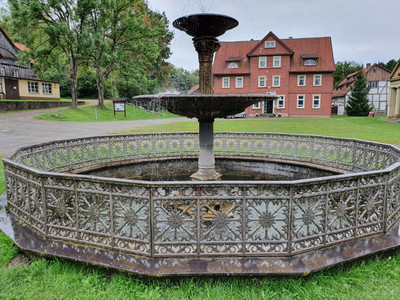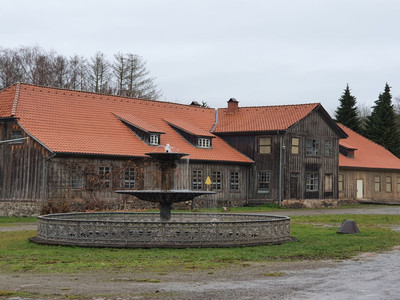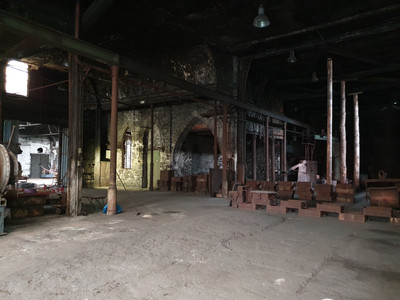The unique ironworks from the age of mercantilism is a nationally significant technical and cultural monument.
The iron ore processed came from the Lauterberg, Sieber, St. Andreasberg and, above all, Elbingerode mines.
The plant originally comprised 14 buildings, including the blast furnace smelter with two blast furnaces, three fresh furnaces, three hammer mills and a wire smelter. A 1.6 km long operating ditch led the water from the Oder first to the 1st incline, then to the 2nd and 3rd inclines. 23 overshot water wheels (around 1800) were used to drive blowers, hammers, punching machines and other machinery. Today, the moat is used to generate electricity using two turbines.
Extensive conversion and modernization measures were carried out after the end of the Napoleonic era. Impressive buildings in the neo-Gothic and neo-classical styles were built. A large new machine hall was built. The adjoining wireworks was of particular importance: it supplied the particularly supple wire for the "Albert wire ropes" developed in Clausthal in 1834, the use of which, starting from the Harz mining industry, ushered in a worldwide technical revolution.
In 1871, the Königshütte was privatized and converted into a pure iron foundry. A mill construction company and an industrial mill (1872-1960) were also operated. As a medium-sized industrial company, the foundry produced a wide range of gray and nodular graphite cast iron items until its closure in 2001. Since then, the industrial monument has been preserved and run as a museum by the owners and the Förderkreis Königshütte Bad Lauterberg e.V., which was founded in 1983. The entire hut ensemble is a listed building and its architectural uniformity and artistic appeal make it a historical highlight in northern Germany.
Digital hut guide at the Königshütte
A QR code at the entrance to the Königshütte site allows any interested guest or random visitor to take a digital tour via cell phone using 15 themed buttons at eight stations. Although the site is currently freely accessible, the buildings are not reliably open. However, the digital "look through the keyholes" gives guests an extremely lively impression of the 300-year history of the hut using historical photos, videos, fictional and contemporary witness interviews, as well as a flight over the hut grounds.
The Brockenbande investigates - The lost magic ring
The Brockenbande is also on the road at the Königshütte Bad Lauterberg on behalf of the American Susie Salas. They are to set off in search of the lost magic ring. The storytelling of the puzzle booklet for children aged 8-12 is based on a true story, as Ms. Salas visited the Königshütte for the first time in over 50 years in 2022. At that time, her grandparents lived at the hut and she not only remembered numerous visits, but also the loss of her ring, which has still not been found! With the puzzle tour in handy A5 format, young guests can accompany the four friends and go on a journey of discovery around the hut grounds. You can pick up the free booklet for the puzzle tour "The lost magic ring" at the Bad Lauterberg Tourist Information Office and during guided tours at the Königshütte.


